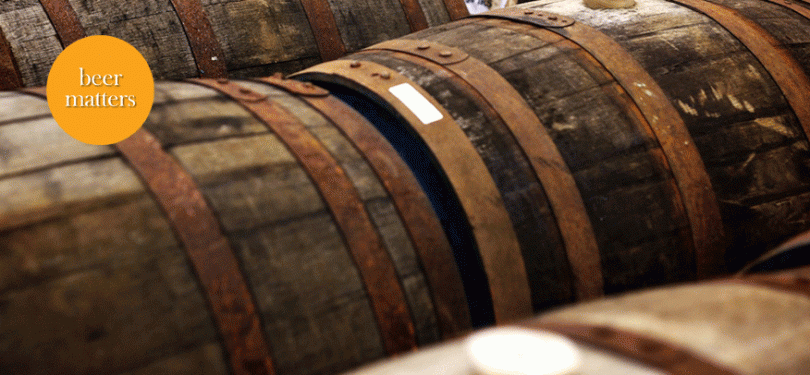 As I write this Christmas edition of Beer Matters, I’m just finishing up some great crafted porters and rich amber ales — there was plenty of great quaffing to choose from via our local crafters as well as imports. One that stood out was the Shipyard Brewery feature. The LCBO made available a double IPA, an imperial porter, and a barley wine from this great East Coast craft brewer.
As I write this Christmas edition of Beer Matters, I’m just finishing up some great crafted porters and rich amber ales — there was plenty of great quaffing to choose from via our local crafters as well as imports. One that stood out was the Shipyard Brewery feature. The LCBO made available a double IPA, an imperial porter, and a barley wine from this great East Coast craft brewer.
As we drift into the early winter chill and Christmas season, I’m stocking in some of the seasonals available this time of year — rich imperial Russian stouts, strong Belgian ales, old ales, spiced ales and of course, barley wines. Barley wine is a perennial winter favourite of mine — a rich, vinous, heady brew to be savoured in a snifter with a fine cigar, or with a rich dessert in front of a warm fire. Barley wine, as an ale style, is the strongest ale in the English brewing tradition and touted to be the brewing craft’s answer to brandy. In my opinion, although it has some of the warming of brandy, it has more in common tastewise with rich fortified wines like sherry or Madeira.
Origins, Development & Style
The type of ales we think of today as barley wines sprang from the archaic British farmhouse brewing tradition where the beers made from the “first runnings” (extremely high gravity wort) usually came up to eight percent or more when fermented. The pioneering development of barley wine as a discrete style took place in the early eighteenth century in breweries attached to the great aristocratic houses of England. Today some of these estate breweries, like Traquair House, still produce limited releases of their strong ales. Such strong ale of “vinous qualities” was often aged in oak barrels a year or more and was intended to be a substitute for wine at the table when wine supplies were interrupted.
Producing beers of this stre ngth and age was beyond the means of all but the upper classes, thus restricting brewing of the style to wealthy households with estate breweries. Commercial production was never viable until the revolution in malting science made producing pale malt in volume cost effective. Commercially produced barley wine first appeared around 1855, when legendary Burton upon Trent brewers, Bass and Company, offered their “No.1” Barley Wine. It became an industry standard by which all barley wines were measured, and remained in production until the 1970s.
Despite barley wine having colour ranging from reddish amber to deep dark brown, the main ingredient is pale malt. It’s the hot mash process and long boil that caramelizes the malt wort, giving a darker colour and the distinctive caramel-toffee discernment. Proper fermentation temperatures yield the esters that give the brew its rich dark fruitiness. After primary and secondary fermentation, the young brew is barreled for up to two years, resulting in a big robust ale with a complex bearing of vinous dried fruit, caramel, molasses, nutty, toffee, treacle character, plus some oxidative notes from extended aging. This is what defines the traditional English barley wine. Because of the complex flavours aging gives this beer, it is best sipped from a snifter glass to enjoy the release of its aromas as it gradually warms.
Barley wine’s rich complexity and robust strength were a natural for American Craft Brewers to emulate. The style has undergone a second blooming in the domestic craft and microbrewing industry. As always, North American crafters like to take a traditional style and innovate — push the envelope a bit. So North American barley wines are often more hoppy, with higher gravity than their UK counterparts. Some American microbrewers put in additives like spice, molasses, Demerara sugar, and raisins to accent the brew and raise the alcohol content. Barreled barley wine is always more complex, but many modern brewers use natural flavourings and long-term tank conditioning or bottle conditioning to achieve similar results.
Recommendations
Mill Street Brewing Barley Wine (LCBO # 70359 and on tap in season) is probably the most recognizable barley wine in the local market — an annual offering from one of our best regional ale crafters. As is common with all well-made natural barley wines, Mill Street’s varies in colour, taste and strength from year to year. On average, this is a hazy orange with a nice tight one-finger frothy cap that leaves lace. Aroma is sweetish caramely, spicy, much like butter toffee. Mouth feel is oleaginous, with generally sweet caramel-butter-spice flavours — sometimes well-balanced with bittering hops. The finish is long, with the buttery sweet malts giving way to a drying where the alcohol shows up very prominently. It’s usually drinkable young, but it will improve with a few months in the cellar.
Dieu du Ciel Solstice d’Hiver (LCBO 270405) is a truly mellow, rounded barley wine from Quebec’s premier craft brewer. Decants a cloudy ruddy-brown ale with a small tight cap that lasts and laces the snifter. Very demure nose: some sweet fig and malt aromas, light earthiness, some roastiness, light fusel tones. Phenomenal mouthfeel to this — silken and rounded, very smooth and mellow for a high-gravity ale. Flavour profile has the front side showing sweet caramel malting, well-balanced with some sharp herbal hopping, some decent complexity midpalate. Finishes with some increased bitterness dominating the lush caramel-fruit-roast tones and leaving a gentle warming. Alcohol is well-hidden by this beer’s complexity. A world-class barley wine with an unexpected dividend — it’s ready to drink without cellaring to smooth out the rough edges. Very, very approachable, and a fine drinking big ale.
Garrison Ol’ Fog Burner is a great barley wine from a Halifax craft brewer, which has appeared in this market in limited quantities. We can hope it appears in the winter LCBO release. Dark coloured: mahogany with ruby highlights and a small creamy head. The aroma is sweet, with malts, hazelnut, some cocoa, dusty English yeast notes, and grassy hops. Rich malt flavour, with caramel and hints of liquorice, and a spicy profile — full-rounded body, just-right sweetness, bold hopping. A well-balanced big beer with a long rich finish that produces a very pleasant warming. A very good barley wine, suitable to drink young or to cellar for more rounding.
McAuslan’s St. Ambroise Vintage Ale (seasonal offering at the LCBO) is the premier brew of another great Quebec craft brewer — a barley wine made with a blend of wheat and barley malts — unfiltered, a lovely deep-orange color, rich maltiness, hints of caramelized fruit, impressions of plum pudding, but surprisingly crisp, with a balanced finish and ample bittering. Finish is long, mellow and warming, with sweet anise filling the palate. This ale ages wonderfully, and with a few months in the cellar on it, I have to say this is one of the best domestic barley wines I’ve sampled.
Malt Monk’s Taste o’ the Month
La Trappe Isid’or Ale (LCBO 288688) was brewed to commemorate the 125th anniversary of the Dutch Trappist brewery (De Koningshoeven Brewery) founded in 1884. It’s named after friar Isidorus Laaber, the first brewer of Koningshoeven monastery. When the caged corked bottle is decanted of its contents, we get a cloudy, unfiltered deep amber ale with a sticky off-white cap. Notes of musky banana, ripe fruit, malt sweetness and spicy hopping meet the nose. The flavour has a base tone of stone fruit and green apples with moderate acidity — complexity leaves impressions of fresh baked gingerbread, cherry licorice, hazel nuts, spice cake, and citrus peel. The finish lingers, leaving a light dryness on the palate. Complex, warming, a very approachable big ale. Reasonably priced for such a great Trappist ale.
The Malt Monk is the alter ego of D.R. Hammond, a passionate supporter of craft beer culture. He invites readers to join in the dialogue at http://maltmonksbeerblog.wordpress.com/








